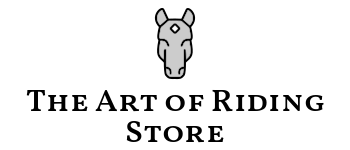- Anna Guzik-Kornacka
- News
- 0 likes
- 2530 views
- 0 comments
When writing about academic work, I mean work according to the Academic Art of Riding (AAoR) method, created by Bent Branderup, based on the knowledge of old equestrian masters and modern scientific discoveries. In Poland, this training method is not very popular yet, and the only certified AAoR trainer is Bettina Biolik (more information about Bettina and training with her can be found on her FB: https://www.facebook.com/beeandthehorse )
What encouraged me to choose this training method is how logic the whole system and its structure, thanks to which each of us can work with our own horse, and not always rely on the help of a trainer, although a good trainer should guide us to the correct tracks from time to time. What puts many people off is a fact that academic work requires patience and there are on short cuts. You won't start working on a piaffe or a levade the first day, and you probably won't even work at a canter. However, solid basic training gives great results.
Horse training using AAoR methods is divided into 16 steps, which we climb gradually like a ladder (Academic ladder). The first step of the ladder is groundwork, and the sixteenth step is Capriola. Not all of us have to reach the top of the training ladder, but without a solid foundation, more advanced exercises have no chance to succeed. You can read more about the "Academic Ladder" in the chapter "Academic Ladder" by Anna Eichniger in volume 1 of the AAoR book series entitled Horsemanship. https://theartofridingstore.com/gb/book-series-academic-art-of-riding/100-volume-1-horsemanship.html
However, before we start climbing the "academic ladder", we should work with our horse on relationship, trust and communication, i.e. generally understood horsemanship. Horsemanship starts with our responsibility for the horse and its welfare. Only a horse whose basic needs have been met will be able to relax and focus on the training. If your horse can move freely each day, has the ability to interact with other horses, access to adequate amount of hay, etc., then you can begin working on communication and building trust. Get your horse used to the outdoor or indoor arena where you will be working, let him have a look at all suspicious objects, etc. For example, when I don't work with Honcio for a long time, he thinks that there must be monsters behind the bushes and squirrels in the trees are definitely suspicious ;).
The next step is to practice smoothly leading the horse in various positions. You can start by leading the horse in a partner position (walk forward by the horse’s neck, keep rope in the inner hand, whip and the rest of the rope in the outer hand, our shoulders facing the direction of the movement), and then once partner position is established try to go backwards in front of the horse's head (groundwork position). The next position (work in hand position) is similar to the partner position, but the whip is held in the inner hand, it is easy to switch from this position to the longing position by increasing the distance. Practice smooth transitions between these positions and changes of direction without stopping. The goal of this training phase is to achieve smooth starting, stopping, and direction changes without need to stop. Initially, it is helpful to practice along the wall (fence), but over time try to become independent of it. At this stage of the training, the horse learns to understand your body language, and over time you will begin to move in unity (the horse is focused on you longer and longer and you stay “connected”). A common mistake when practicing leading is not keeping an appropriate distance between you and the horse and the horse to you. When practicing leading a horse, we should be at a distance of one or at least half a meter from the horse. Even when walking backwards, you don't have to be close enough to touch the cavesson because you don't need it at this stage of your training, you can support your body language by using the whip when your horse comes too close. It takes a while to get used to walking backwards, so you can also make dry runs, without a horse. It is also important that you keep the track and not drift with your horse. Most horses are asymmetric and will tend to drift one way or the other, your job is to see this and help the horse correct its balance. You can find out more about the different leading positions in the chapter "Basic Education with Heart and Soul" by Marius Schneider in Volume 1 of the AAoR book series "Horsemanship". Marius Schneider attaches great importance to this stage of education, which later greatly facilitates communication with the horse in groundwork. During my internship with Marius Schneider, I initially underestimated the importance of this type of exercise and wondered when we would finally move on to real exercises ;). Now I know that beautiful basic work is irreplaceable, and the shortcomings at this stage are very disturbing in the later stages. In the video below, Marius Schneider and his horse Aramis show beautiful, smooth leading work in different positions and transition from one position to another (the video is commented on by Bent Branderup, unfortunately in German) https://www.youtube.com/watch?v=V4c5qznORVg
In the next post I will write how to start academic groundwork and summarize the aids used in Academic Art of Riding.

Comments (0)